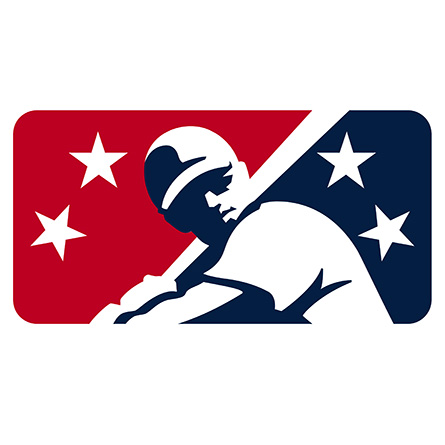 It was a tale of two Winter Meetings in San Diego, with plenty of excitement and buzz on the MLB side and a very subdued atmosphere on the Minor League Baseball side.
It was a tale of two Winter Meetings in San Diego, with plenty of excitement and buzz on the MLB side and a very subdued atmosphere on the Minor League Baseball side.
We ended up basically our time in San Diego this week between the separate MLB and MiLB hotels, along with plenty of offsite meetings and speaking engagements. While in many ways MiLB is back in terms of finances to pre-COVID levels, the sport has been radically overhauled after the MLB takeover of MiLB. It’s fair to say many MiLB front-office folks and leaders are wary of MLB management of the sport and don’t think MLB is fully committed to effective MiLB management. Part of this has to do with a different management approach to MiLB: While working with St. Pete could be frustrating and decisions made sometimes without much clarity, there was never much doubt that all involved were working to promote Minor League Baseball.
Take the new facility standards, which still are not set in stone. Last week teams were informed they had an additional year to submit their plan to meet the new standards, but there will be teams that just will not be able to meet them, including older ballparks on small and challenging footprints where it would not make financial sense to update. There are already teams exploring moves, as well as some that may just walk away from MiLB or MiLB-sanctioned leagues. And, from what we’re told, we’ll be seeing changes to the standards as MLB tweaks them where some imprecise language was in place. (Ask your local owner about the height of batting cages.) One such facility standard change–netting–was announced today, and we’ll cover it separately.
Today, many owners privately chafed at MLB oversight, arguing decisions are made to benefit MLB with little regard to MILB needs and finances. While that makes sense if you’re working on the MLB side, it does lead to a more somber, straight-laced approach to the sport.
For example: almost everyone on the MiLB side hates the Marvel 2023 promo due to a lack of creativity on logos and an expensive $7,500 total cost for both licensing ($5,000) and holding a Marvel event ($2,500, plus more for pricey duds) to participate in the promo. The Marvel Defenders of the Diamond promo, unveiled in 2022, was popular both with teams and fans. But the new pricing system will make it harder for MiLB teams to recoup costs.
Especially with such uninspiring products. MiLB has some legendary logo designers (like Brandiose and Studio Simon and an in-house track record from the likes of Ryan Foose when it came to fantastic promos like Copa de La Diversión), but instead the work was farmed out to Marvel designers who have no experience with logo work. No offense, Marvel, but throwing muscular arms on an existing character is lazy and cliched. Results: meh.
And there’s also a widespread belief that the MiLB overseers are taking the fun out of promotions. No way MLB overlords sign off today on legendary promos like Prostate Cancer Awareness Night, where Myrtle Beach Pelicans GM Andy Milovich received an in-game prostate exam while singing “Take Me Out to the Ballgame.” Or our 2013 Promo of the Year winner from the Lehigh Valley IronPigs, when the International League team unveiled the world’s only truly hands-free urinal game controller, featured within all men’s restrooms at Coca-Cola Park. (When a user approaches the urinal, the video console flips into gaming mode, using patented technology that detects both his presence and stream. That was the same year the team gave away a fully paid funeral to a fan and foam fingers to fans in a–yup–prostate cancer awareness promo.) Or attracting plenty of young fans to the ballpark via a Mega Candy Drop, a promo pioneered by the Quad Cities River Bandits.
Of course, owners and front-office folks used to complain all the time about St. Pete pre-MLB takeover. And, interestingly, there doesn’t seem to be a whole of personal animosity between the new MiLB overlords and MiLB owners that we can detect. But at the end of the day, today’s MiLB is not the same as yesterday’s MiLB–and that’s a sad and avoidable outcome.
Meanwhile, at the Hyatt, the hotel lobby was jammed, the bars and restaurants were packed and the atmosphere significantly different than at the Bayfront Hilton. Though there was no organized job fair–and, given the Internet, we’re not likely to see one again–plenty of teams were meeting with potential employees.
Of course, making money will always make folks happy, and with MLB generating revenue at pre-COVID levels and teams offering $300-million-plus contracts to a slew of players, smiles will abound. While there are still some challenges to the business of the game, amazingly enough there is still plenty of upside as the sport continues to evolve a streaming strategy, addresses the ballpark situations in Oakland and Tampa, and waits for what most in the industry considers inevitable expansion. MLB seems to have weathered a COVID recession, and while there are some outstanding issues that need to be addressed–perhaps there was too quickly a rush to embrace gambling when we’re seeing online gaming not as popular as anticipated (yes, we’re looking at you, Kansas)–most teams are in pretty decent financial shape, and the sport enjoys both labor peace and monetary stability.
